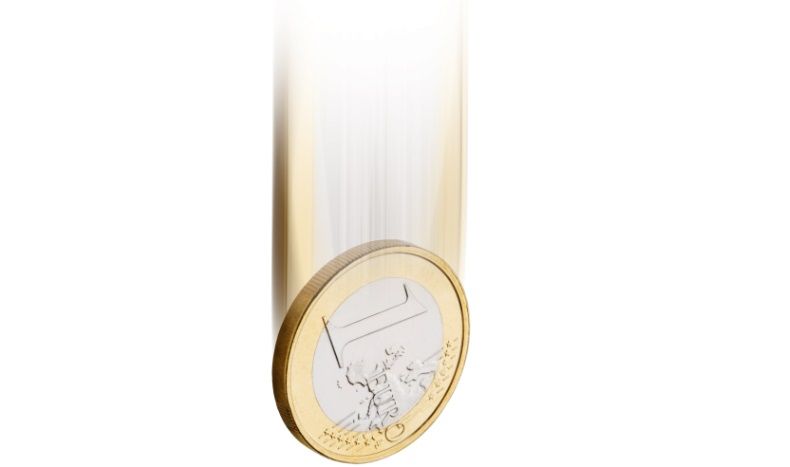European markets enjoyed a strong day yesterday against a backdrop of concerns about slowing economic data, as well as concerns about further trade tensions.
Asia markets look set to end the week on a cautious note after their post Fed sell off yesterday, after the Bank of Japan left monetary policy unchanged, adopting a steady as she goes approach, unlike the ECB yesterday whose guidance came across as much more dovish than expected.
It is possible that the cautious mood has something to do with the fact that today it is expected that the White House will unveil a smaller list of tariffs on between 800 to 900 Chinese products, raising concerns about possible retaliation, and an escalation in trade tensions between the US and China, at a time when the Chinese economy appears to be spluttering a little, after yesterday’s weak retail sales and fixed asset investment data.
While the timing of yesterday’s announcement by the European Central Bank that it would start paring back its asset purchase program was a surprise, the actual content of the announcement wasn’t.
Markets had been expecting the details to come at the July meeting, however the news that the bank plans to reduce the amount of its monthly asset purchases from €30bn a month to €15bn from September, before stopping them completely by the end of the year, was more or less in line with expectations.
This confirmation initially sent the euro higher, however the realisation that the ECB had put back the prospect of a rise in rates towards the back end of 2019 prompted a re-evaluation of when monetary policy would next undergo a significant realignment.
For most of this year we’ve become used to recent announcements from various ECB policymakers that a rate rise might come fairly soon after the asset purchase program had ended, which had raised expectations of some move on rates in the first half of next year.
In light of that expectation its therefore not surprising that the market reaction was so negative to the paragraph that stated that rates would “remain at their present levels at least through the summer of 2019”, and for “as long as necessary”. This was a significant departure from market perceptions, sending the euro sharply lower, though stock markets reacted more favourably, ending the day sharply higher.
The ECB also downgraded its GDP forecasts, while upgrading its inflation outlook from 1.4% to 1.7%.
The slide in the euro wasn’t helped by a better than expected US retail sales number which showed a jump in consumer spending in May from 0.3% in April to 0.8% in May, which in turn served to highlight a continued divergence between US and EU monetary policy that is likely to widen further between now and the end of next year.
With ECB President Draghi due to leave the ECB in October next year there is the very real prospect that the Fed could well hike another six times before the ECB even starts to move rates higher. With those sorts of rate differentials, it is hard to argue how the euro can go any other way but down.
Today’s final EU CPI numbers for May should give us an indication as to whether the ECB was right to nudge up its forecasts yesterday. In the recent flash numbers, the headline number jumped up from 1.2% in April to 1.9% which should be confirmed later this morning. More importantly the core numbers are expected to come in at 1.1%, still well below what is comfortable for the ECB, though a lower euro could go some way to pushing that number higher in the coming months, with a rising oil price still yet to really filter its way fully into the headline numbers.
EURUSD – a spike up to the 1.1850 level before a sharp reversal saw the euro break below the 1.1720 area and head lower back towards the May lows, where we have trend line support from the 2017 lows. A break below 1.1500 has the potential to open up a move towards the 1.1360 level.
GBPUSD – the failure to move back through the 1.3460 area also saw the pound slide back to retest support at the 1.3270 area. A move below here reopens the lows at the end of May at 1.3200. A move below 1.32000 targets a test of the trend line support from the 2017 lows which comes in around the 1.3100 area.
EURGBP – another failure to move above the 200-day MA at the 0.8820/30 area yesterday has seen the euro slide back with the recent lows at 0.8700 the next key support. A move through here opens up the 0.8640 area.
USDJPY – while above the 200-day MA remains on course for a retest of the May highs at 111.30. Support comes in at the 109.50 level.
CMC Markets is an execution only service provider. The material (whether or not it states any opinions) is for general information purposes only, and does not take into account your personal circumstances or objectives. Nothing in this material is (or should be considered to be) financial, investment or other advice on which reliance should be placed. No opinion given in the material constitutes a recommendation by CMC Markets or the author that any particular investment, security, transaction or investment strategy is suitable for any specific person.






